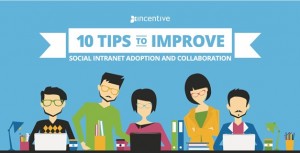Ever found yourself checking Facebook every few minutes, only to close out of the app in boredom – before going right back in for another quick peek a few minutes later? Well, you’re not alone, and there’s an excellent reason for this – a strong psychological compulsion that’s baked into the site itself.

Facebook expertly applies the principles of user psychology and experience design to the entire site. No matter how you use Facebook, the chances are pretty good that you’ve developed habits based on common psychological patterns that you weren’t even aware of.
In this post, we’ll take a look at how Facebook leverages the principles of consumer psychology to make its service more compelling, as well as how many of these psychological behaviors intersect with the triggers used in the most persuasive advertising. Finally, we’ll look at several examples of ads that expertly manipulate emotional and psychological cues to great effect so you can make your ads more alluring.
The Psychology of Facebook: Why We ‘Like’ Facebook So Much
Facebook and its users are a veritable feast for researchers and psychologists. With so much interest in Facebook as a media platform and its seemingly unstoppable dominance over the social space, many researchers and organizations have turned their magnifying glasses on the site and how people use it in recent years. Among the most notable of these organizations is the Pew Research Center, which has tons of data about how people use Facebook.

Illustration by J. Longo. Via The Kernel / The Daily Dot.
Facebook is Comfortably Passive
One of the major draws of Facebook is that it allows us to see a great deal about what’s going on in the lives of our friends and contacts with very little sharing of information required. Like a character in a movie, surrounded by a softly glowing wall of CCTV monitors, we can see the minutia of our contacts’ lives while offering very little – if anything – in return.
Although the stereotype of the “oversharing” Facebook user remains prevalent (and we all know at least one person like that), it’s not as common as you might think. In fact, many people share original content or updates of their own infrequently.
Data from Pew Research Center indicates that:
- Only 10% of Facebook users update their status once per day
- Only 4% of Facebook users update their status more than once per day
- Approximately 25% of Facebook users either never or rarely change their status
So what does this mean? Well, it depends on the personality type of the user in question.
5 Major Personality Traits of Facebook Users
With more than 1.5 billion monthly active users, Facebook is the largest social network in the world by a fair country distance. With such a broad global audience, you could be forgiven for assuming that there would be dozens (or more) of different psychological profiles among Facebook’s user base. While this may be true, there are just five predominant personality traits evident in the behavior of Facebook users, traits known in psychology circles as the fundamental dimensions of personality. They are:
- Agreeableness
- Conscientiousness
- Extraversion
- Openness
- Neuroticism
Note: Use of “extraversion” above is intentional, and not a typo. For more on the fascinating (if you’re a word nerd) etymology of “extraversion” versus the more common and traditional “extroversion,” read this article at Scientific American.
Obviously, even the most boring person has a multidimensional personality. Nobody is limited to just one or two of the above traits – they’re evident in all of us to some degree, and this often changes depending on the situation. However, whichever of these traits is the most dominant in a person’s personality can and does influence how they will behave on Facebook.

By examining Facebook status updates through the lens of the five major personality traits, researchers at Brunel University in England were able to identify, with reasonable accuracy, the types of updates that people post depending on their personality type:
- Agreeable people tend to be more helpful, cooperative, and have better interpersonal relationships. As such, agreeable people often use Facebook to maintain genuine relationships on Facebook, with an emphasis on authentic, genuine interactions and maintaining communication with people they value. In addition, agreeable people were the least likely to speak badly of others on Facebook.
- Conscientious people are often responsible, have a strong work ethic, and are often highly organized. Conscientious people typically use Facebook less frequently than less conscientious people, but when they do use it, they tend to be more discrete and steer clear of controversial topics. Conscientious people also tend to avoid badmouthing others on Facebook.
- Extraverts, unsurprisingly, post and update their Facebook status the most frequently. These upbeat, talkative, generally positive people make use of Facebook features that encourage frequent updates and communication (such as Messenger), and update their status more often as a means of socializing with their often-large social networks.
- People who exhibit high levels of openness also update their status on Facebook and share content frequently. However, unlike extraverts, people with strongly open personalities tend to prefer the exploration of new intellectual ideas through Facebook rather than casual socializing. This type of user also uses Facebook (and other social media platforms) to find and learn new information.
- Neurotics tend to display traits and behaviors that are perceived negatively, such as low self-esteem and, in more extreme cases, heightened paranoia. Neurotic users are more likely to post updates about their romantic relationships to preemptively offset perceptions that their relationships are weak, or to seek affirmation and attention. Neurotic individuals are also more likely to go off on personal rants on Facebook, as neuroticism is closely correlated with anxiety and greater sensitivity to perceived threats.
Based on this research, we can see predictable (and likely familiar, if you use Facebook) patterns beginning to emerge from even the most rudimentary analysis of Facebook user behavior. It’s no surprise that extraverts are more likely to exhibit narcissistic tendencies than agreeable individuals, or that neurotics are more likely to seek validation from their social networks to overcome their perceived shortcomings.
However, there’s another entirely separate psychological mechanism that also has a strong influence on how people use Facebook – reward.
The Psychological Rewards of Using Facebook
We don’t just use Facebook to keep tabs on ancient nemeses from high school or rant about the latest atrocities from the campaign trail – we use it because it’s rewarding, and we get a tangible sense of accomplishment from using it.

Like rats hunting for food pellets in a maze, we use Facebook because we develop a reward system over time; a system that our brain adapts to and begins to crave.
Researchers in Germany explored this reward relationship in a landmark study published in 2013 that used imagery of participants’ brains to identify – and predict – behaviors observed among Facebook users.
Published in the scientific journal Frontiers in Human Neuroscience, the paper examined responses in a specific part of the brain known as the nucleus accumbens, a region of the brain that processes feelings of reward associated with food, sex, money, and social status. Research subjects were shown images of themselves and other people alongside positive captions, similar to those users might see on a Facebook News Feed. Researchers found that particular synaptic activity in the nucleus accumbens could reliably predicate how users interacted with Facebook.

Location of the nucleus accumbens in the human brain
“We found that we could predict the intensity of people’s Facebook use outside the scanner by looking at their brain’s response to positive social feedback inside the scanner,” Dar Meshi, a postdoctoral researcher at Berlin’s Free University, told The Huffington Post via email. “We found that the more sensitive a person’s nucleus accumbens is to discovering their own reputation is good, specifically in relation to discovering another person’s reputation is good, the more likely they are to have an intense relationship with the [sic] Facebook.”
TL;DR: We’re Desperately Needy and Crave Social Acceptance
To recap, we’ve begun to identify what makes Facebook so compelling. Depending on our personality traits, we’re either socially enthusiastic communicators who want to maintain strong relationships, or deeply insecure wrecks with a very real need for social validation. We develop strong behaviors based on the inherent sense of reward that comes from unsolicited social acceptance, a tendency that often becomes stronger over time.

It’s no wonder we can’t stop checking Facebook on the sly.
However, this kind of compulsive behavior is certainly nothing new, and it’s certainly not limited to Facebook. In fact, advertisers have been expertly manipulating these same psychological tendencies for decades.
The Psychology of Advertising: How the Pros Persuade
Aside from actual clinical psychological studies, modern advertising is perhaps the single most effective demonstration of how universal psychological characteristics can be manipulated to make us buy things we don’t need.
Whether you subscribe to Jung’s views on psychology or prefer Freud’s approach, when you start digging into how advertisers manipulate our deepest insecurities, it’s actually kind of embarrassing how easy it can be to make us do things. And – as we’ll learn momentarily – many of the most effective strategies used in advertising correlate closely with the psychological allure of Facebook and other social media platforms.
Selling an Ideal
The savviest advertisers know that people don’t want to buy things – they want to make their lives better. That’s why many ads (especially on TV) don’t focus on selling products, but selling lifestyles.

“Hi! We’re all proud members of the Screen Actors Guild!”
Think about it. Virtually any product you can think of has been positioned in a way that makes us want something because of the perceived status that product or service confers upon us. Even something as mundane as breakfast cereal is often positioned in an aspirational way. Whenever you see people on TV eating breakfast cereal, chances are they’re sitting in an immaculately clean, airy kitchen in a large house, leisurely indulging in a bowl of oatmeal or whatever. They’re definitely not trying to get the kids to cooperate in time for the school bus, or sitting in a cramped, dingy kitchen in a crowded one-bedroom apartment surrounded by dirty dishes.
We want the kind of life in which we can take our time to enjoy a delicious, well-balanced breakfast before we start our day, and so that cereal becomes part of the wider lifestyle we want to buy, making it considerably more appealing.

“EVERY morning is like this at our house!”
Even “quirky” ads that try to make us laugh or intrigue us with their weirdness (think of those awful State Farm ads with the late-night calls to the guy in the khakis, for example) share these aspirational qualities. The houses in these ads are all the same – perfectly clean show homes with enormous rooms and Restoration Hardware furniture, perfectly manicured lawns flanked by brand-new cars at the end of paved, heated driveways, and attractive, successful neighbors we’d actually want to invite over for margaritas on a Saturday afternoon.
Of course, it’s all bullshit – but we buy into it anyway, whether we’re consciously aware of it or not. Even if we know it’s bullshit, we’re complicit in the acknowledgement that the lifestyles we see in TV ads are considered the “ideal”, even if these artificial lifestyles bear no resemblance to our actual lives.
It’s kind of depressing, if you think about it.
The Psychology of Advertising: 4 Ways to Get Inside Your Customers’ Head
So, now we know how predictably emotionally malleable we are in the hands of modern advertising, let’s take a look at some examples of how psychological triggers can be used to great effect in social media advertising.
Strike Terror into the Heart of Your Audience
In many situations, it’s much easier to provoke a visceral reaction to something in a person by manipulating negative emotions, and fear can be among the most powerful.
The ad example below, for a snoring/sleep apnea product, is a great example:

Although I can’t speak for the quality of the actual product being sold here, the ad is pretty effective. For one, it likely blends in well with the kind of organic content your friends and family share in their News Feed – you know, the alarmist tabloid headlines, the forgettable clickbait from BuzzFeed. However, what really makes this ad eye-catching is the juxtaposition of the imagery with the language.
The hero image – a man lying in bed, securing a ventilation mask to his face with straps – is pretty powerful. This guy’s bedtime routine looks a lot different than mine, and not in a good way. However, we’re told that “Snoring and sleep apnea can be fatal.”
Most people don’t have sleep apnea, but snoring? That’s another thing entirely, and now it can kill you?
At the very least, I’m intrigued, at least for a couple of moments. That said, I pretty much lost interest when the copy led with “Researchers say…” As you may have heard, a lot of scientific papers are actually bullshit – especially psychological studies – or at the very least feel like bullshit, so I’m never particularly keen to indulge this kind of informercial-style advertising. However, the ad certainly did catch my eye.
Here’s another ad that would blend in perfectly in many News Feeds, this time for women’s health website Lifescript:

Ordinarily, the inclusion of a hilariously bad stock photo for an ad like this might seem like the kiss of death, but in this case, I think it works pretty well. For starters, this is exactly the kind of clickbait article that gets shared thousands of times (especially on Facebook), but it doesn’t take long to get to the real motivator of the ad, which is the fear that you could be accidentally exposed to a blood disease in these 13 weird places.
Some argue that the effectiveness of clickbait is diminishing, and they’re right. Audiences are becoming a lot savvier when it comes to clickbait, and the so-called “curiosity gap” is closing, but that doesn’t mean it’s not still an extraordinarily powerful technique if you can get under your audience’s skin (bad pun most definitely intended). I’d love to see the stats on this ad.
However, one of the best examples of using fear in a Facebook ad campaign came courtesy of our own Erin Sagin, who sent me a link to this ad:

What’s most interesting to me about this ad is the way in which it appeared to Erin in the first place.
Erin told me that she had recently booked a trip to Panama, and that she had also been conducting a great deal of online research into the Zika virus, a potentially deadly infection that can cause terrible birth defects in children that has been a major public health concern in Panama. It was only after this research that Erin began to see this ad in her News Feed.
Obviously, there’s no mention of the Zika virus anywhere in this ad, but the implications are there – Zika’s primary transmission vector is mosquito bites. For Erin, the result (and the timing) was quite powerful. It’s also a great example of how ad campaigns can be subtly tied to ongoing current events to create powerful ads that reflect public concerns and anxieties.
Enraged, Outraged, Engaged: Harnessing Anger
Polls, quizzes, and other interactive elements seem to do really well on Facebook, not least those that provoke an angry response from “armchair activists” – you know, those people on Facebook who are always posting updates about climate change, shrinking ice caps, endangered animals, and similarly polarizing environmental and social issues.
Although appealing to this demographic can be challenging (and may not necessarily be relevant to your business), the examples below expertly demonstrate how leveraging outrage and anger can be a powerful motivator in Facebook ads. Let’s take a look at this example from Greenpeace:

This ad wins on several levels. Firstly, it’s highly timely, focusing on a specific item of legislation that was being considered by President Obama (spoiler alert: Obama suspended plans to drill most of the Arctic waters, but not all of them), making it a tempting way for Facebook users to show their friends how environmentally conscious they are.
Secondly, the CTA is bold, and superimposed upon a strong hero image of Greenpeace activists in action. The copy singles out Shell Oil by name, setting the stage for the conflict that drives these kinds of news stories and engaging the viewer in a wider struggle, as well as creating urgency by selectively using uppercase copy to highlight the imminent threat posed by the proposed drilling.
Here’s another ad that flirts with controversy and leverages a hot-button issue, from Planned Parenthood:

Few political talking points are as controversial or inflammatory as women’s access to healthcare, and the manufactured scandal surrounding Planned Parenthood was one of the most widely covered events of last year. This ad urges the viewer to take action and voice their opposition to plans to defund Planned Parenthood, and aligns closely with the type of news content often seen in Facebook News Feeds.
Overall, it’s a simple ad, but the advertiser is relying on people already having strong opinions on the matter to make an impact with minimal copy and a simple hero image. Regardless, this ad is a great example of how you can motivate people to take action with minimal cues and raise awareness of important issues in a timely manner.
Make Your Audience Feel Warm and Fuzzy (Then Make Them Feel Bad)
So far, the examples (and their associated emotional triggers) that we’ve focused on have been for negative emotional responses. However, while these levers can be extraordinarily powerful, so too is the ability to make your audience feel all warm and fuzzy inside.
Take a look at this ad from Natural Dog Health and Wellness:

The hero image of this ad, with the morose-looking dog, is powerfully effective. Even if you’re not a dog person, it’s hard not to empathize with this poor old dog. If you do have a dog – and a dog with arthritis – I’d imagine this ad would be extraordinarily compelling.
Now, I can’t speak to the effectiveness or reliability of the business or the product, but an example of how to tug on your audience’s heart strings, it’s pretty damned great – as those impressive engagement metrics indicate.
This same psychological technique can be exploited in another way too, though. Check out this ad for animal rights advocacy website Care2:

This ad is not messing around. The copy that precedes the hero image doesn’t pull its punches, and uses extremely provocative language to grab your attention and start pushing those buttons. The image itself is heartbreaking – who could stand idly by while this sweet animal suffers? – and even the closing copy is powerfully direct.
Help Your Audience Visualize Themselves As Their Ideal Self
We talked about the importance of aspirational messaging earlier in the post, but it bears repeating – helping your audience see themselves (and their lives) as better than they really are is one of the most effective psychological techniques you can use when advertising on Facebook.
Check out this ad for Virgin America:

This ad, for Virgin America’s First Class seats, leverages aspirational messaging to great effect. For one, these seats almost look like something you’d expect to see in the VIP section of an exclusive nightclub. Who wouldn’t want to envision themselves as a glamorous, international jet-setter? This ad appeals directly to people’s desire to make aspirational purchases and highlights just how swank Virgin America’s First Class cabins really are – clever.
This type of aspirational messaging is especially prevalent in the automotive industry – and not just for selling the latest model of high-end SUV. Take a look at this ad from car rental company Zipcar:

Obviously, this ad isn’t perfect. There’s a lot of wasted space in this ad, and the copy has been truncated in one section. The intact copy highlights the ease of using Zipcar as a service, as well as the benefits of membership. However, what’s really clever is the image used, and the associated copy.
Personally, I don’t think going to the grocery store is much of an adventure (unless you count trying to survive Rhode Island’s terrible drivers), and I never laugh as much as the people in the image when I’m driving (unless one of the aforementioned terrible drivers gets pulled over). That said, Zipcar has leveraged aspirational messaging and an idealized view of motoring to convey that Zipcar isn’t just a car rental service – it’s a lifestyle business. Aesthetically, the ad is light, breezy, fun, and very compelling – pretty much everything driving isn’t.
As Part of a Balanced, Aspirational Lifestyle
Hopefully, this post has given you some food for thought about what you can do to improve your own Facebook ad campaigns by thinking carefully about user psychology. Once you start thinking about how to leverage emotional and psychological triggers in your campaigns, you can start preparing for the increased interest in your business.
Are Facebook Ads Worth It?
Digital & Social Articles on Business 2 Community
(104)
Report Post





